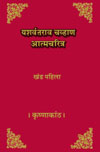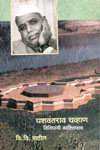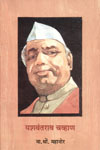I was asked to write an article on "Leftism in India" and I feel that remarks with which I preface it are not inapposite or irrelevant for all those who occupy seats of authority, whether at the State or national levels, will at some time or other be called upon to assess and face the problem. The Congress party is really a Socialist party, certainly since the Avadi Congress session early in 1955 when it spiked the guns and stole the thunder of the Congress Socialist party which was formed in May 1934. In 1952 the Socialist Party and the Kisan Mazdoor Praja Sabha had merged to form the Praja Socialist party with Acharya Kripalani as its president and Asoka Mehta as General Secretary. On the economic plane there is little to distinguish the policies advocated by Asoka Mehta from those implemented by Nehru. The differences, if any, are on the level of foreign policy.
Administrators like Chavan, who are potential Prime Ministers, are well aware of these facts. The criticism has been made that Nehru's socialism in its domestic as also its foreign manifestation, is hardly distinguishable from Communism. Here Chavan's rustic shrewdness and down-to-the-ground earthiness should help to restore a sense of balance and perspective if he does finally occupy the office of Prime Minister.
Stability in Asia too often hinges on the existence of a single individual. In India the passing of Nehru will eventually see the breakup of the Congress party into two groups, right and left. The survival of democracy will then depend on whether the Communists or the Socialists are able to attract the allegiance of the left group, for in an underdeveloped country such as India democracy can only survive as a system of democratic socialism. The alternative is Communism.
Asia cannot escape from itself as Europe did. The dislocations caused by the Industrial Revolution in Britain impelled emigration abroad where in the older Dominions such as Australia, New Zealand and to a lesser degree South Africa empty countries with small indigenuous populations offered room for settlement and advancement. Asia's mammoth and rapidly-growing populations have no such escape reservoirs, which is why the impact of science and technologythat is, of the Industrial Revolutionmust cause tremendous displacement and disorganisation unless advancement keeps pace with the rate of population growth, which in turn must be rigorously controlled. To avail themselves of modern industrial techniques and simultaneously to preserve their economic and social stability the countries of Asia must possess a sufficiency of managerial and technical talent and of financial surpluses, both of which were available when Britain and the countries of Europe achieved their Industrial Revolution.
























